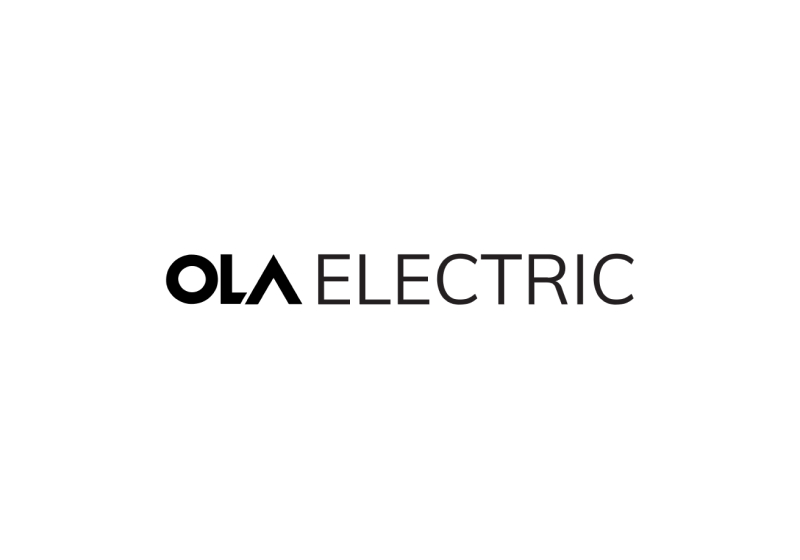Ola Electric: Powering Up and Delivering Fast
December 20, 2024, 1:06 am

Location: India, Karnataka, Bengaluru
Employees: 1001-5000
Founded date: 2017
Total raised: $3.07B

Location: India, Karnataka, Bengaluru
Employees: 1001-5000
Founded date: 2010
Total raised: $4.37B
In a world where power cuts can darken homes and disrupt lives, innovation shines like a beacon. Recently, a man in India used the headlamp of his Ola scooter to light up his workspace during a blackout. This simple act caught the attention of Bhavish Aggarwal, the Chairman and Managing Director of Ola Electric. His response? A promise of a solution: the Ola PowerPod. This moment encapsulates the spirit of modern electric vehicles (EVs) and their potential to serve beyond mere transportation.
The image of a scooter illuminating a room is more than just a clever workaround. It symbolizes the adaptability of technology in everyday life. In a country where power outages are common, the ability to harness energy from an electric vehicle could be a game-changer. Aggarwal’s vision for the PowerPod is to transform scooters into reliable power sources. This innovation could turn a simple ride into a lifeline during emergencies.
Social media buzzed with reactions. Users suggested practical features, like adding a power socket in the scooter’s boot. This kind of feedback highlights a growing trend: consumers want more from their products. They seek versatility and utility. The idea of using a scooter as a backup power source resonates deeply, especially in regions where electricity supply is inconsistent.
But Ola Electric is not just about power solutions. The company is also venturing into the fast-paced world of food delivery. Aggarwal recently announced the launch of Ola Dash, a service promising 10-minute food deliveries through the Open Network for Digital Commerce (ONDC). This move positions Ola as a competitor in a rapidly expanding market, where speed is king.
The ONDC initiative aims to create an open network for digital commerce, allowing businesses to connect and thrive. It’s a bold step towards modernizing how goods and services are exchanged in India. With Ola Dash, customers can order meals from local restaurants and receive them in record time. This service is currently operational in Bengaluru, with plans for expansion.
The quick food delivery market is booming. Competitors like Swiggy and Blinkit are already entrenched, offering similar rapid delivery services. Ola’s entry into this space is a strategic move. It reflects a broader trend where companies are diversifying their offerings to capture more market share. The ability to deliver food quickly is not just about convenience; it’s about meeting the demands of a fast-paced lifestyle.
However, Ola Dash is not without its challenges. The company previously attempted a similar service, which was short-lived. The 10-minute grocery delivery service, launched in 2022, was shut down after just six months. This history raises questions about the sustainability of Ola Dash. Will it succeed where its predecessor failed? The answer lies in execution and adaptability.
Ola’s strategy includes leveraging its existing infrastructure and technology. The company already has a vast network of electric scooters and a strong brand presence. By integrating food delivery into its platform, Ola can create a seamless experience for users. Imagine ordering a ride and a meal in one app. This convenience could set Ola apart from its competitors.
Moreover, the Ola Dash service is designed to operate within a 1-kilometer radius. This limitation ensures that deliveries are quick and efficient. It also encourages partnerships with local restaurants, fostering community ties. The focus on local businesses aligns with the growing consumer preference for supporting neighborhood establishments.
As Ola Electric expands its offerings, it’s essential to consider the environmental impact. Electric vehicles are often touted as a greener alternative to traditional transportation. By promoting electric scooters and integrating them into daily life, Ola is contributing to a more sustainable future. The potential for scooters to serve dual purposes—transportation and power source—further enhances their value.
The excitement surrounding Ola’s innovations is palpable. Users are eager to see how the PowerPod will evolve. Will it become a standard feature in future models? The prospect of using an electric scooter as a portable power source is intriguing. It could redefine how we view personal transportation.
In conclusion, Ola Electric is at a crossroads. The company is not just selling scooters; it’s offering solutions. From lighting up homes during power cuts to delivering meals in minutes, Ola is pushing the boundaries of what electric vehicles can do. The future is bright, and the possibilities are endless. As technology continues to evolve, so too will the ways we interact with it. Ola is leading the charge, and consumers are ready to embrace the ride.
The image of a scooter illuminating a room is more than just a clever workaround. It symbolizes the adaptability of technology in everyday life. In a country where power outages are common, the ability to harness energy from an electric vehicle could be a game-changer. Aggarwal’s vision for the PowerPod is to transform scooters into reliable power sources. This innovation could turn a simple ride into a lifeline during emergencies.
Social media buzzed with reactions. Users suggested practical features, like adding a power socket in the scooter’s boot. This kind of feedback highlights a growing trend: consumers want more from their products. They seek versatility and utility. The idea of using a scooter as a backup power source resonates deeply, especially in regions where electricity supply is inconsistent.
But Ola Electric is not just about power solutions. The company is also venturing into the fast-paced world of food delivery. Aggarwal recently announced the launch of Ola Dash, a service promising 10-minute food deliveries through the Open Network for Digital Commerce (ONDC). This move positions Ola as a competitor in a rapidly expanding market, where speed is king.
The ONDC initiative aims to create an open network for digital commerce, allowing businesses to connect and thrive. It’s a bold step towards modernizing how goods and services are exchanged in India. With Ola Dash, customers can order meals from local restaurants and receive them in record time. This service is currently operational in Bengaluru, with plans for expansion.
The quick food delivery market is booming. Competitors like Swiggy and Blinkit are already entrenched, offering similar rapid delivery services. Ola’s entry into this space is a strategic move. It reflects a broader trend where companies are diversifying their offerings to capture more market share. The ability to deliver food quickly is not just about convenience; it’s about meeting the demands of a fast-paced lifestyle.
However, Ola Dash is not without its challenges. The company previously attempted a similar service, which was short-lived. The 10-minute grocery delivery service, launched in 2022, was shut down after just six months. This history raises questions about the sustainability of Ola Dash. Will it succeed where its predecessor failed? The answer lies in execution and adaptability.
Ola’s strategy includes leveraging its existing infrastructure and technology. The company already has a vast network of electric scooters and a strong brand presence. By integrating food delivery into its platform, Ola can create a seamless experience for users. Imagine ordering a ride and a meal in one app. This convenience could set Ola apart from its competitors.
Moreover, the Ola Dash service is designed to operate within a 1-kilometer radius. This limitation ensures that deliveries are quick and efficient. It also encourages partnerships with local restaurants, fostering community ties. The focus on local businesses aligns with the growing consumer preference for supporting neighborhood establishments.
As Ola Electric expands its offerings, it’s essential to consider the environmental impact. Electric vehicles are often touted as a greener alternative to traditional transportation. By promoting electric scooters and integrating them into daily life, Ola is contributing to a more sustainable future. The potential for scooters to serve dual purposes—transportation and power source—further enhances their value.
The excitement surrounding Ola’s innovations is palpable. Users are eager to see how the PowerPod will evolve. Will it become a standard feature in future models? The prospect of using an electric scooter as a portable power source is intriguing. It could redefine how we view personal transportation.
In conclusion, Ola Electric is at a crossroads. The company is not just selling scooters; it’s offering solutions. From lighting up homes during power cuts to delivering meals in minutes, Ola is pushing the boundaries of what electric vehicles can do. The future is bright, and the possibilities are endless. As technology continues to evolve, so too will the ways we interact with it. Ola is leading the charge, and consumers are ready to embrace the ride.